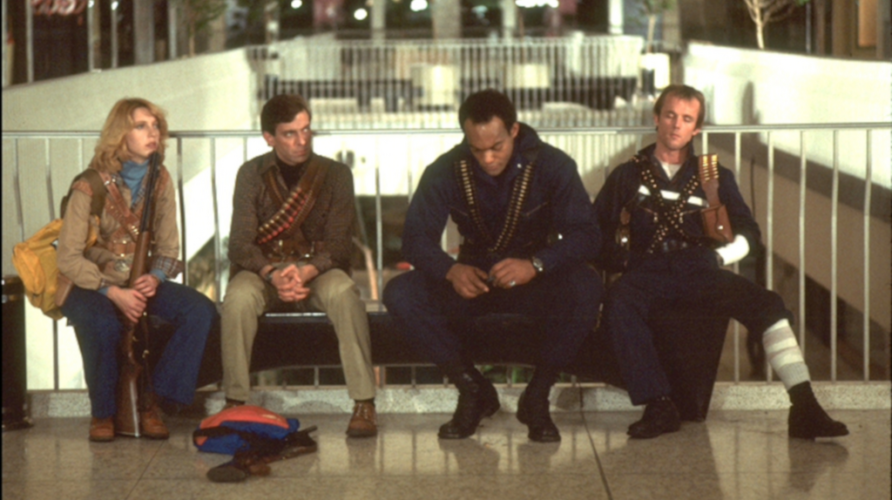By Well Sewn Staff
“Horror shows us that the control we believe we have is purely illusory,
and that every moment we teeter on chaos and oblivion.” – Clive Barker
Horror as a genre evokes numerous feelings, some positive, some ill. For many, the horror film or novel is a great way to pass the time and enjoy a good thrill; for others, they embody the very fears that lurk within their souls. Whether you fancy yourself a horror aficionado or not, one thing is clear: horror sells. So much in fact that the market has become saturated with cheap, quick-to-produce material that often leans heavily into jump scares while minimizing the suspense of atmospheric terror – the philosophy of the setting as the mood enhancer. Many film buffs lament the state of modern horror, and though some sterling examples do remain of decent horror out there, few films evoke the passionate apologists like yesteryear’s films do.
In its purest form, horror goes far deeper than causing us to jump in our seats after being startled, or grossing us out with “gore porn” and grisly special effects. Classic horror evokes much deeper emotion than such superficial charms, and no director understood this principle better than the late, great George A. Romero. Known worldwide as “the King of the Zombie Film”, Romero’s work could easily have been passed off as reticent examples of the aforementioned gore porn genre – although make no mistake, special effects artist Tom Savini certainly put his expertise to good use in the second and third films of Romero’s “holy trinity” of zombie films.
Yet Romero managed to turn his otherwise-low budget horror films into something more than the sum of their (bloody) parts. Tapping into the cultural zeitgeist of the time in which he wrote the screenplays, Romero turned 1968’s Night of the Living Dead and 1985’s Day of the Dead into societal capstones, engineering horror masterpieces that still stand up today. But among his trilogy of “Dead” films, no film grips or punches quite as hard at the subconscious mind like 1978’s Dawn of the Dead. Those that have seen the admittedly admirable love-letter 2004 remake starring Ving Rhames and Sarah Polley already have a basic understanding of the plot, but to understand the commentary Romero offers us through the film requires a deeper dive.
In the beginning of the film, the world has gone to hell. The United States is several weeks into the midst of an unexplained epidemic where the bodies of the recently-deceased come back to life and begin attacking the living – the common zombie film trope. In Philadelphia, WGON news producer Fran Parker is in the midst of a chaotic emergency broadcast attempting to relay information to the public while her boyfriend (and father of her unborn child), helicopter traffic reporter Stephen Andrews encourages her to flee with him in the helicopter. Joining them are two SWAT team officers, friends Peter Washington and Roger DeMarco who are simultaneously shown taking part in a raid on a local tenement whose occupants were refusing to turn over their dead to the National Guard.
The competing scenes in the first thirty minutes establish the paradigm of the film: social conventions and order are breaking down, and people are beginning to fend for themselves. The four protagonists flee via helicopter to an abandoned mall outside of Pittsburgh that has been overrun by the living dead, forcing them to shelter in place. At great cost, the four manage to fortify the mall and turn it into their own luxurious palace, allowing them a chance to embrace their hedonistic desires in a free-for-all in the mall’s still-full shops and stores. Over time however, as society outside the mall withers away and only the dead are left for company, their avaricious palace becomes their prison, dooming them to the constraints of greed when others attempt to raid their shelter and take the mall for themselves, letting the armies of the undead march onto the raiders and the protagonists en masse.
The film is beautifully shot, capturing the late-‘70s horror aesthetic that makes so many films from that era staples of the genre: atmospheric, tense direction and cloyingly intimate sense of dread illuminate every frame of the film while the dead lurk in the shadows. There’s action, there’s vivid special effects, but none of these factors elevate Dawn of the Dead to legendary film status on their own. The film serves as a lens through which people could view themselves, a consumer culture bent on the easy life, asking us then to explore what would happen to our civility if the façade of society was stripped away. Romero’s model for the movie came from witnessing shoppers lazily shambling around a mall one afternoon, mimicking in part the look of his legendary undead menaces.
So stark are the film’s messages that modern audiences may be shocked to find so many relevant topics that resonate today: abortion, consumerism, mistrust of authority, racial prejudices. Even the presentation of the four main characters reflects different social issues that we still grapple with: Fran attempting to assert herself amongst three men, Peter’s stoicism in the face of a changing world, Roger’s cowboy mentality and Stephen’s fragile masculinity. It is that bleak, dystopian view of a society gone to Hell that truly lifts the film into classic territory.
One of the most memorable lines of dialogue in the film comes from the chief protagonist of the story, the stoic Peter, when he gives his theory as to the cause of the zombie pandemic. “When there’s no more room in Hell,” he says, “the Dead will walk the Earth.” It is a chilling line meant to evoke apocalyptic tidings in an audience living under the weight of the deepening tensions of the Cold War in 1978, but they reflect on us today as well. With divisions dividing the U.S. and people more frayed around the edges than ever before, we too live with the uncertainty that tomorrow will be as good as yesterday was. Dawn asks us to look inward and reflect on what we would do if the end came; that question becomes ever more important in a world whose future seems ever more uncertain.



